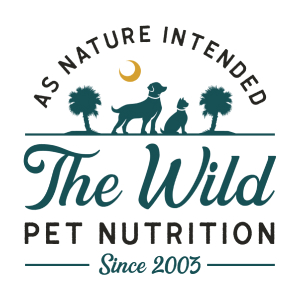Myths in Pet Food

Myth #1: Veterinary Brand Dog Food is the best for your pet.
Just a glance through the ingredients panel of many commercial veterinary diets reveals that these foods are full of inappropriate ingredients for your cat or dog, such as poultry by-products (which can be a variety of non-meat based parts), corn gluten meal, brewer’s rice, wheat, and other sources of vegetable-based proteins which do not support your pet’s needs or nutritional requirements. Cats and dogs are carnivorous and require diets that are made of mostly animal meat-based proteins in order to truly thrive.
Myth #2: Dry food helps to clean pets’ teeth.
While a common myth, this is not at all true. Dry food contains starches which break down into sugars between pets’ teeth. This actually contributes to plaque and tartar buildup. As carnivores, cats and dogs have teeth designed to rip and tear flesh. A fresh, raw food diet helps to flush the teeth with added moisture and break down the bacteria that cause plaque through the live enzymes present in the meat.
Myth #3: Pets require life stage and breed specific diet formulas.
Puppy, kitten, senior and specific breed diets grace the aisles of major pet stores along with foods labeled for every breed and size of dog. “Life stage diets were created as a marketing tool: the more formulas manufacturers develop, the more shelf space they command.” (1)
While the amount of food a dog or cat requires will vary based on size and age, their nutritional requirements remain the same, no matter what their size, age, or breed. All dogs and cats require fresh, meat-based proteins, fats, and little to no carbohydrates.
Myth #4: Raw food is dangerous to feed to pets due to the risk of Salmonella and E. Coli.
Unlike humans, who are omnivores, cats and dogs evolved to eat fresh, raw meat which their bodies are equipped to safely process due to much shorter digestive tracts and highly acidic stomachs.
“This means that raw food moves through your pet’s system in less than half the time it would through a human’s system, and the high acidity kills most bacteria. Even if the food was contaminated, it is likely that the microbes would not enter the animal’s bloodstream. Commercially prepared raw food manufacturers take measures to control against the presence of unwanted organisms such as salmonella and e. coli, so if you’re concerned about contamination, frozen raw diets are a good option.” (1)
The precautions taken in feeding raw food to pets are no different from preparing raw meats for human consumption. Dr. Karen Becker asks, “What’s the difference between preparing raw ground beef to barbeque on the grill, and preparing raw food for the family cat or dog? Why are there no policies discouraging humans from handling raw food purchased at the grocery store? …The implication that raw pet food is somehow more dangerous than raw food intended for humans has absolutely no basis in fact.” (2)
Myth #5: Foods with grain are better for my pet. Grain-free foods can cause heart disease.
A recent study on the rise of Dilated Cardiomyopathy, a heart muscle disease, in some dogs has resulted in a great number of misleading headlines about grained versus grain free foods. No evidence has been found to conclude that grain free foods lead to heart disease in dogs, but many big pet food companies stand to benefit from this myth.
Dr. Karen Becker illuminates the real motive behind this debate in one of her articles in which she states, “As we know, big pet food loves non-animal meat, plant-based ingredients because they’re plentiful and cheap. The industry spends lots of money looking for new, ‘innovative,’ biologically inappropriate dog and cat food ingredients, and doing research to determine how much of those ingredients pets can tolerate before they develop digestive issues or other changes in their health. Needless to say, pet food industry journal articles written in defense of their much-loved ingredients have been increasing in number since mid-July [2018] when the FDA issued its warning.” (3)
Grains and other starches are used as fillers and binders in dry pet food. These fillers help to bring down the cost of production. All dry pet foods require some amount of these starches to bind the baked pieces of food together. Dogs and cats do not require these ingredients for optimal nutrition.
“Unfortunately, some processed pet food advocates are using the link between grain-free dog foods and DCM to try to push pet parents back in the direction of grain-based diets. However, the problem with grain-free formulas isn’t the lack of grains. At a minimum, it’s the high level of starchy carbohydrates coupled with the extreme high-heat processing methods used to produce these diets.” (3)
Myth #6: High protein diets are hard on your pet’s kidneys, especially senior pets.
“This myth is a result of poor quality food manufacturers using plant proteins in pet foods. The truth is that high plant protein diets are hard on your pet’s organs; high animal protein diets aren’t only healthy for your aging pets, but essential.” (1)
Dogs and cats require high-quality, meat-based proteins as their number one nutrient in order to thrive at all ages. Fresh meat provides amino acids that are vital to your pet’s health and well-being.
Myth #7: Ash content is a major factor in choosing a cat food.
This belief was prevalent in the 70’s and 80’s when it was believed that ash content contributed to feline lower urinary tract disease (FLUTD). It is now known that ash is not a major contributor to FLUTD, rather dry cat food is a major culprit. Processed dry cat foods contribute to an increased pH level in cats’ urine which can lead to the formation of struvite crystals. (4)
A high protein, meat-based, wet cat food helps to flush the bladder and kidneys and reduces the pH level of urine, making it more acidic, which prevents the formation of crystals. High quality, meat-based wet food is essential to the prevention of FLUTD and to a cat’s overall health.
Myth #8: Changing protein types or brands of food is hard on your pet’s digestion.
It is safe to feed pets a wide variety of proteins and foods, even from meal to meal, for healthy dogs and cats that are eating high quality foods. There are benefits to feeding variety, such as providing a wider range of nutrients and preventing boredom and pickiness.
Pets that eat the same food or protein for years sometimes develop sensitivities or allergies to specific ingredients in that food. This is just one more great reason to offer a variety of fresh foods. (1)
Resources
- https://www.onlynaturalpet.com/holistic-healthcare-library/food-diet—general/147/top-10-myths-about-pet-food-and-nutrition.aspx
- https://healthypets.mercola.com/sites/healthypets/archive/2012/09/12/avma-against-raw-food-diet.aspx
- https://healthypets.mercola.com/sites/healthypets/archive/2018/09/19/food-related-heart-disease-in-dogs.aspx
- https://www.onlynaturalpet.com/holistic-healthcare-library/bladder-problems/84/ash-and-magnesium-in-cat-food-summary.aspx


